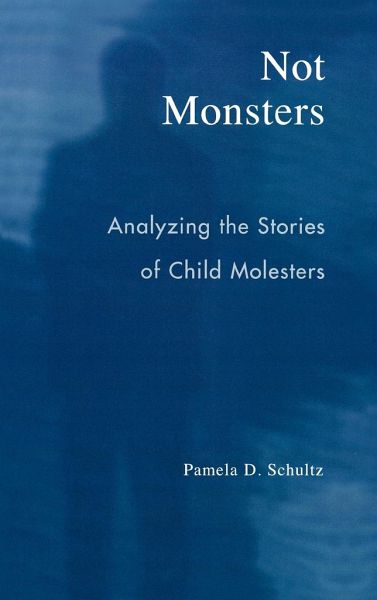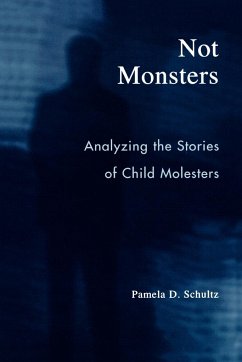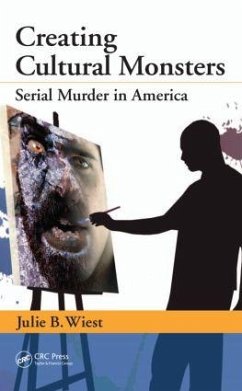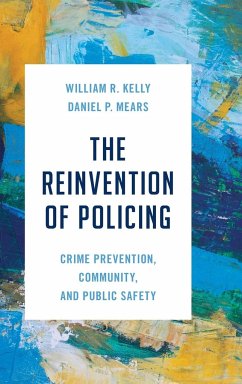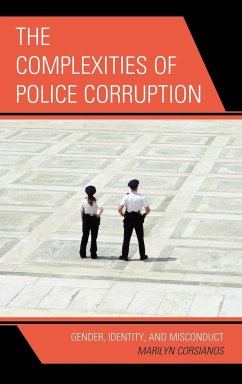Versandkostenfrei!
Versandfertig in 1-2 Wochen
Weitere Ausgaben:

PAYBACK Punkte
70 °P sammeln!





What could possibly motivate a person to molest a child? In search of insights, Not Monsters documents the stories of nine convicted child molesters through one-on-one interviews, listening to what offenders have to say about their crimes and exploring the roots of these behaviors from a social constructionist perspective. Their words paint a compelling and frightening portrait of how sexual abuse works in Western culture to perpetuate a political and social system of dominance and control.
By Pamela D. Schultz
Produktdetails
- Verlag: Rowman & Littlefield Publishers
- Seitenzahl: 244
- Erscheinungstermin: 20. Januar 2005
- Englisch
- Abmessung: 235mm x 157mm x 19mm
- Gewicht: 552g
- ISBN-13: 9780742530577
- ISBN-10: 0742530574
- Artikelnr.: 21725655
Herstellerkennzeichnung
Libri GmbH
Europaallee 1
36244 Bad Hersfeld
gpsr@libri.de
Not Monsters is a valuable book that is both well written and highly informative. Pamela Schultz has done an excellent job in providing straightforward information about the impact of sexual abuse on victims as well as on men who sexually abuse children, looking critically at the motivation behind their behavior. Working in the field for almost three decades has taught me that punishment alone will not prevent sexual abuse from occurring. We need to fully and completely understand it. Not Monsters provides a daring look into child sexual abuse and furthers our understanding of this public health problem, lending support to the national efforts to prevent child sexual abuse. -- Robert E. Longo, independent consultant and trainer, Sexual
Mehr anzeigen
Abuse Prevention & Education Resources International A courageous book that involves a look into the mirror of the author's own experience as a victim of sexual abuse to answer the question: 'Why?' This research provides some of the more revealing accounts of child sexual offending and the life histories of offenders to date-a narrative study that brings us a step closer to deciphering the reasons men violate unspeakable sexual boundaries. Professionals addressing the issues of perpetrators and victims should read this book. -- Douglas W. Pryor, author of Unspeakable Acts: Why Men Sexually Abuse Children This work provides an important contribution to the academic literature because it provides the reader with firsthand accounts from convicted child molesters. Although this may be a rather dark subject matter for many scholars, it nevertheless proves for fascinating reading; and it is, in fact, very well written. Criminal Justice Review Sexual crimes against children are increasing: statistics show that one in five girls and one in ten boys will be sexually abused by age 18. A survivor of childhood sexual abuse intent on breaking the silence surrounding the issue, Schultz peers into theminds of molesters who were willing to reveal their lives, experiences, and perspectives on their molestations, disclosure, arrest, understanding of the crime, and future plans. These narratives describe the perpetrators' childhoods and the onset of molesting behavior. Interpretations of their actions reflect the Groth Typology (established categories of sexual offenders-e.g., fixated, regressed, sex-pressured). Looking at the personal, situational, organizational, and cultural/historical aspects of thenarratives, Schultz asks perpetrators how they think society can combat this crime. She argues that widespread ritual abuse is a myth: most molesters know their victims but are not murderers, and convicted perpetrators have a lower overall recidivism ratethan those convicted of other crimes. She believes that molesters are not beyond redemption, but she points out the lack of available research on treatment and the fact that Megan's Law and notification policies are cumbersome and untested. Summing Up: H CHOICE Sexual crimes against children are increasing: statistics show that one in five girls and one in ten boys will be sexually abused by age 18. A survivor of childhood sexual abuse intent on breaking the silence surrounding the issue, Schultz peers into the minds of molesters who were willing to reveal their lives, experiences, and perspectives on their molestations, disclosure, arrest, understanding of the crime, and future plans. These narratives describe the perpetrators' childhoods and the onset of molesting behavior. Interpretations of their actions reflect the Groth Typology (established categories of sexual offenders-e.g., fixated, regressed, sex-pressured). Looking at the personal, situational, organizational, and cultural/historical aspects of the narratives, Schultz asks perpetrators how they think society can combat this crime. She argues that widespread ritual abuse is a myth: most molesters know their victims but are not murderers, and convicted perpetrators have a lower overall recidivism rate than those convicted of other crimes. She believes that molesters are not beyond redemption, but she points out the lack of available research on treatment and the fact that Megan's Law and notification policies are cumbersome and untested. Summing Up: Highly recommended. All collections; all levels. CHOICE
Schließen
Für dieses Produkt wurde noch keine Bewertung abgegeben. Wir würden uns sehr freuen, wenn du die erste Bewertung schreibst!
Eine Bewertung schreiben
Eine Bewertung schreiben
Andere Kunden interessierten sich für




